Highlights of HealthRight 2023 Summer Internship Program's Two-Week Trip to Kenya
A Daily Blog Written By Rachel Wu, Susan Huang, and Valentina Duron
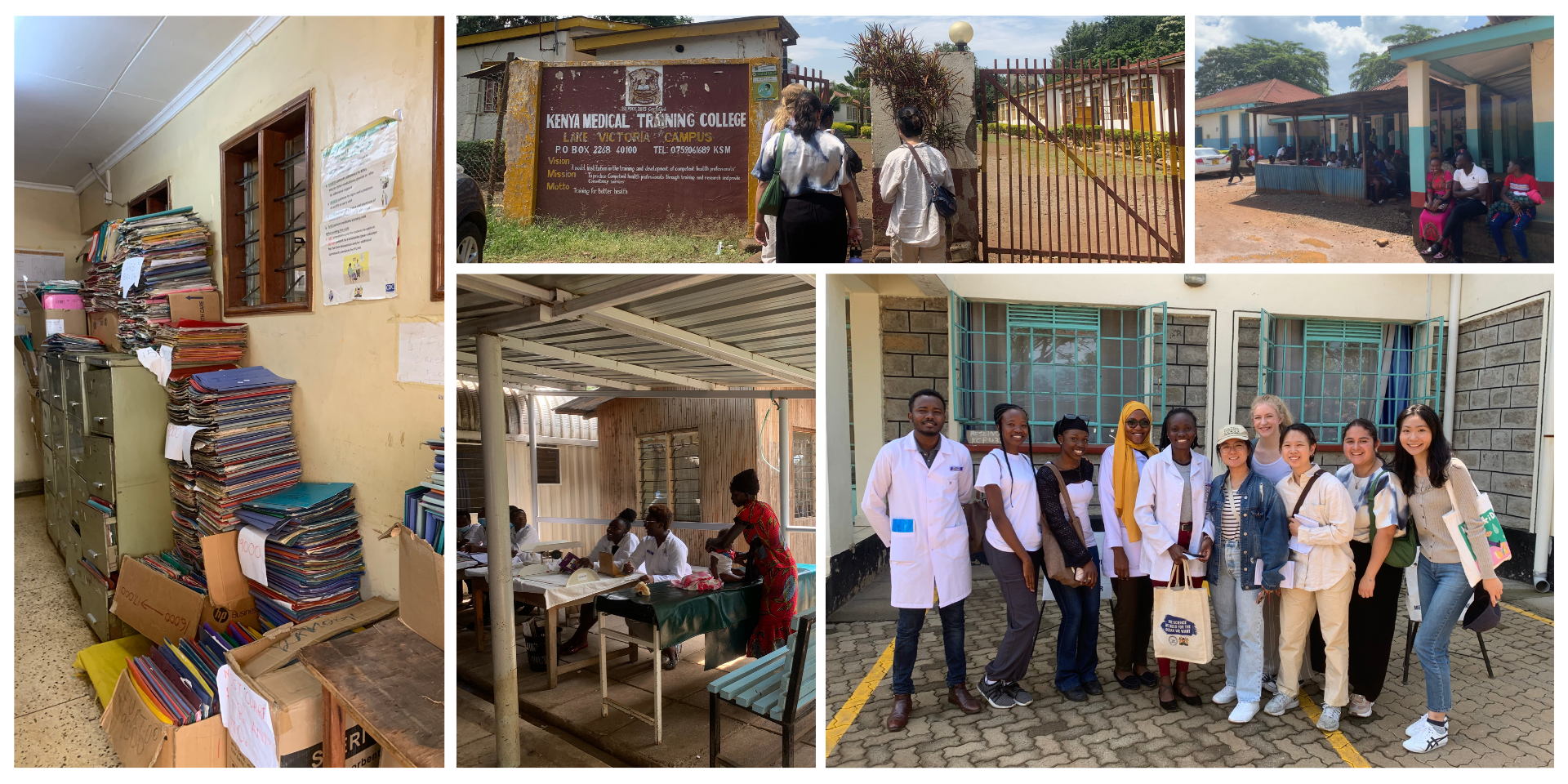
Kisumu Referral Hospital Tour
June 13, 2023
As interns at HealthRight, we visited hospitals and community clinics in Kisumu, Kitale, and Nairobi. From the lecture given by the Kisumu County Director of Health Ms. Lilyana Dayo, we learned that the healthcare system in Kenya is divided into six levels. Level 1 health clinics deliver community health services to individual households, while level 6 national hospitals are often highly specialized teaching hospitals. The first hospital that we visited in Kenya was the Kisumu Referral Hospital. The Kisumu County Referral Hospital is a level 5 hospital that provides 17 services including Outpatient, Inpatient, Emergency, Maternity, Mental health, Laboratory, Radiology, Pharmacy, Rehabilitation, etc.
The first stop we visited was the maternity ward. We saw nurses taking notes on the patients’ health status manually on paper and the books that they keep track of patients’ health status were as thick as textbooks. They told us that all the patients’ paper health records were manually taken by the nurses and accumulated on shelves in the “Health Records & Information Department” at the hospital. The hospital stores copies of patients’ health records and retrieves them when the doctors need references.
We continued our journey, hoping to encounter and learn about new experiences. When we arrived at the hospital’s administrative building, we encountered a group of local medical school students, we talked and learned about the difference between the healthcare systems in Kenya and the U.S., as well as exchanged our social media accounts to keep in touch in the future.
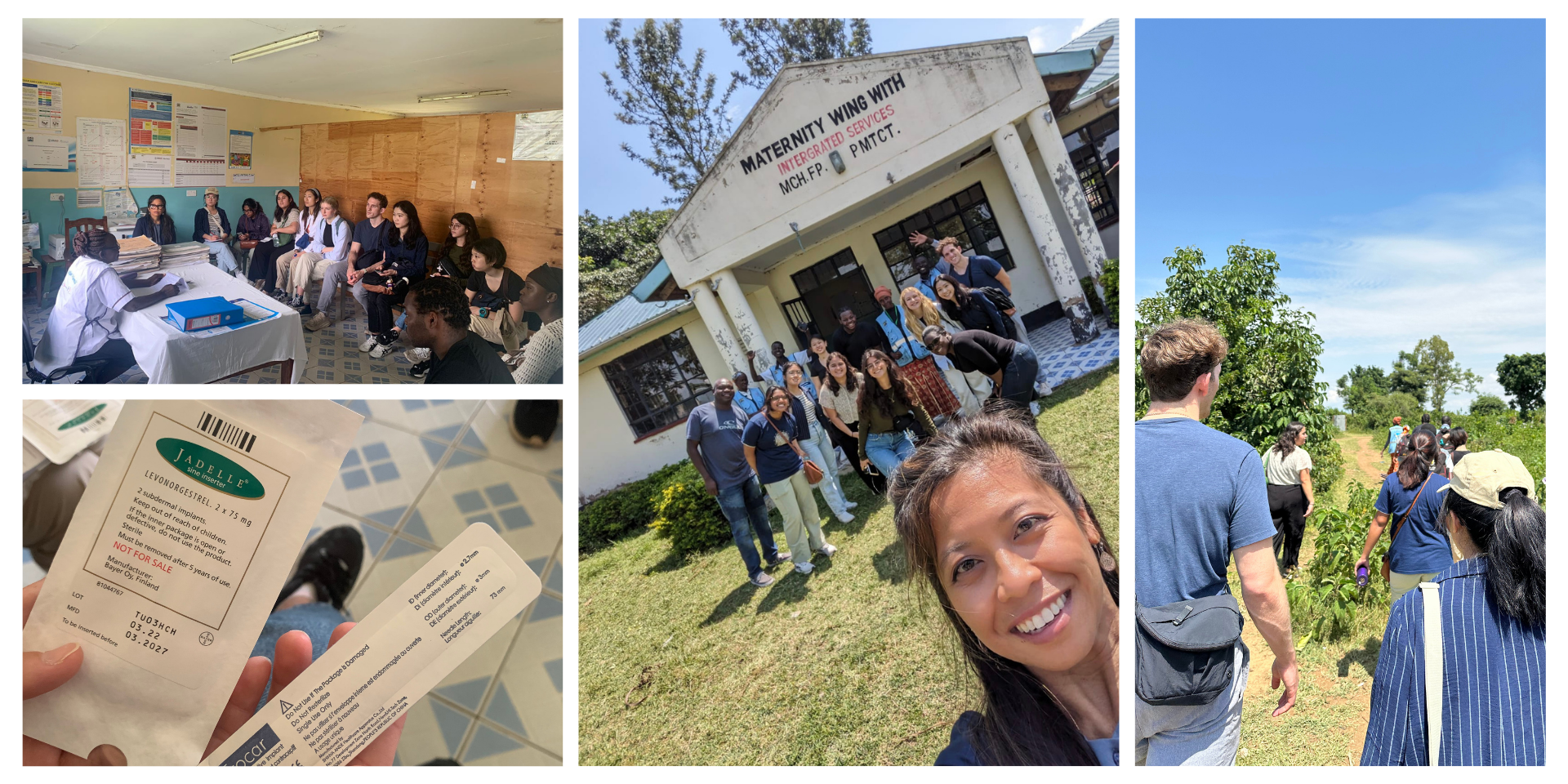
Shadowing Community Health Volunteers
June 14, 2023
The following day, we visited the households by shadowing the Community Health Volunteers (CHVs). Before we went out to the households, the chief nurse at the level 1 community health center gave us a brief lecture on family planning and the burden of disease in Kenya. She introduced the different contraception methods they adopt in advocating for family planning and showed us the implants they use for contraception.
After the lecture, we were divided into different groups to follow the CHVs as they interviewed mothers and pregnant women in households. Each CHV was responsible for a certain number of households and they used an electronic health record system to track the patients’ health status. Because Malaria and HIV are the main healthcare burdens in Kenya, the CHVs asked the mothers questions such as whether they use bed nets in their households and if they have gotten the HIV vaccines, etc. In this activity we had the chance to learn about the frontline primary healthcare in Kenya by observing the CHVs at work. The CHVs also allowed us to do interviews with the local people by ourselves. It was both challenging and meaningful to talk with the local people. Sometimes when they did not understand what we are saying due to language barriers, we used body language to translate the message we wanted to deliver. The CHVs also helped us communicate with the local people.
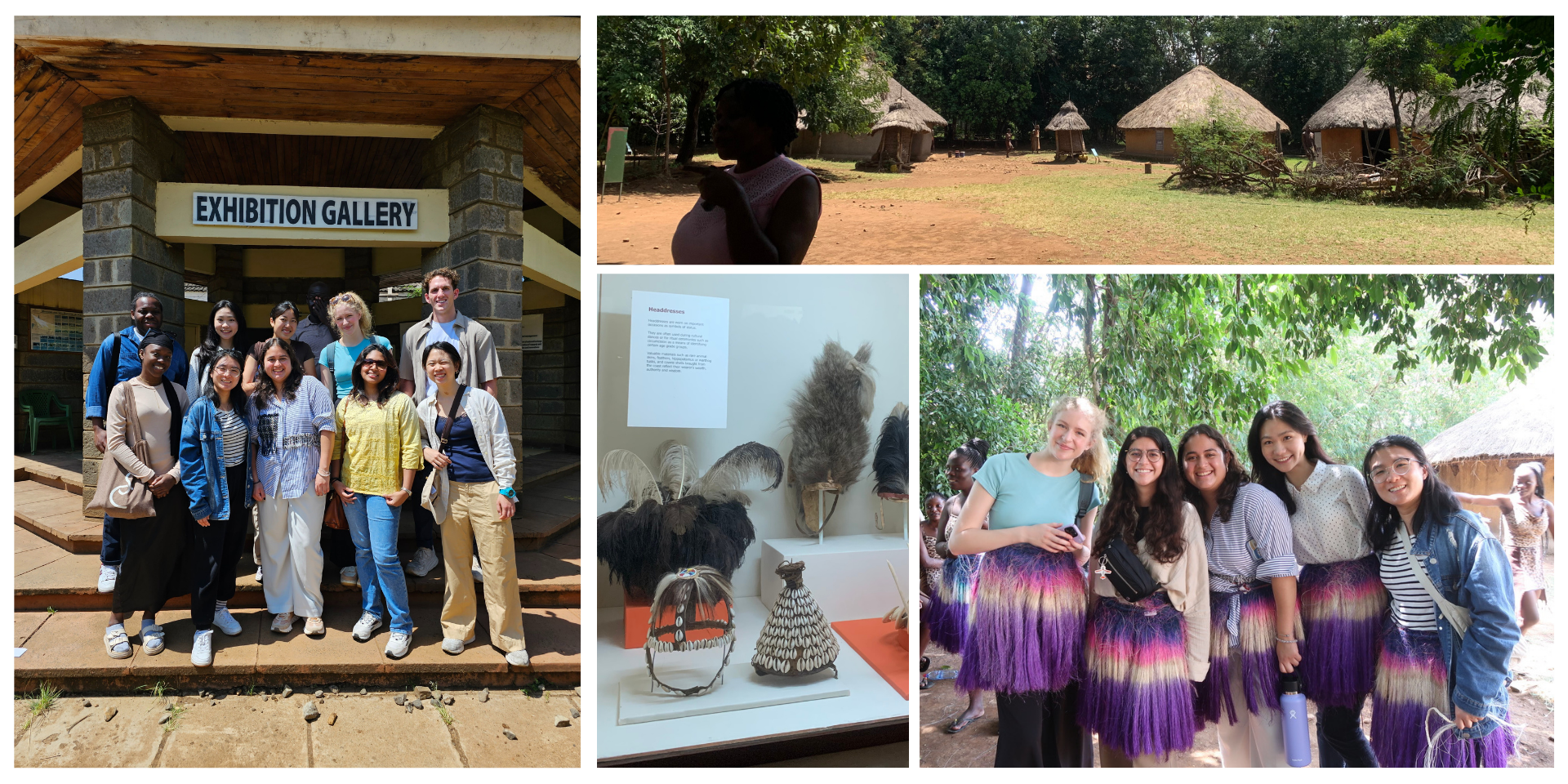
Visit to Kisumu Museum
June 15, 2023
As a cultural learning activity, we visited the Kisumu museum with a local guide. She shared with us the history, culture and customs of Kenya and Kenyan people, such as metal work, musical instruments, traditional medicines, etc. We also visited the hubs where the Luo people live. This group of people is found mainly in Nyanza Province on the eastern shores of Lake Victoria, covering Kisumu, Nyando, Home Bay, Suda and Migori. The local people also invited us to join their traditional dancing and craft works. We also got a chance to dance with the local people in their costumes. This experience enhanced our understanding of their local heritage and history.
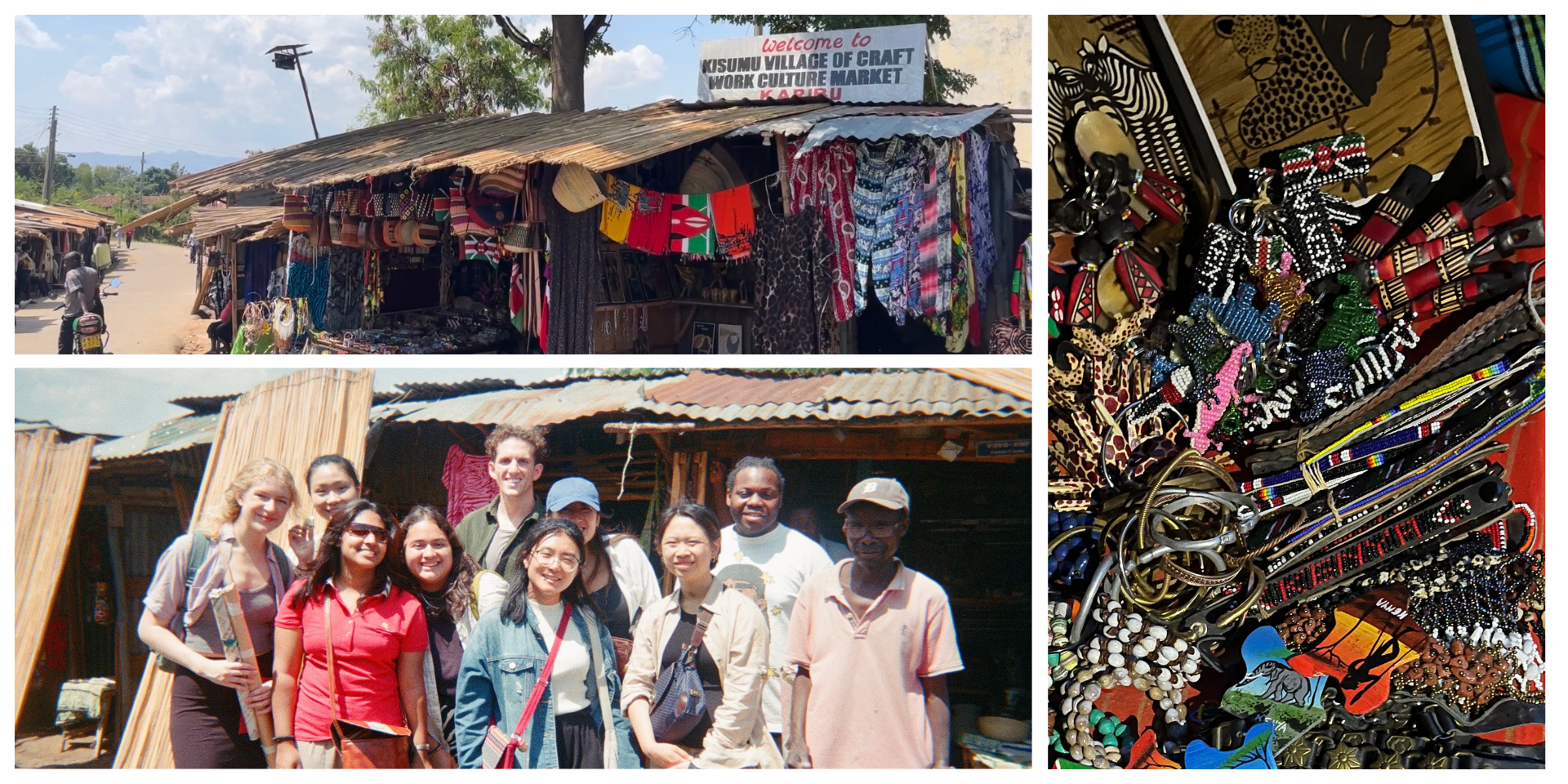
Kisumu Village of Craft Work Culture Market
June 16, 2023
Returning from our second visit to the Kisumu referral hospital, we now had the rest of the evening dedicated to free time. Earlier we had learned about the Kisumu Village of Craft Work Culture Market – a nearby market with an abundance of local crafts – and most of us decided to check it out together. Throughout the city, we have seen numerous motorized three-wheeled taxis called tuk tuks. From our hotel, we hailed one for the first time, allowing us to seeing more of the city we didn’t get to before: locals having friendly conversation in front of a hardware store, drivers of motorcycle taxis called boda bodas huddled together, and people crossing the road, weaving through the traffic of vans and other tuk tuks.
Once we arrived, we were met with many vendors with stands that lined both sides of the street. All on display was a rainbow of crafts: colorful scarves, beaded keychains, wooden spoons, hand-painted canvas paintings, stone animal-shaped trinkets, leather bags, and the list goes on. As we got off the tuk tuk and paid for our ride, we were approached by the vendors who called us our brothers and sisters and ushered us into their respective stands. We divided into smaller groups and made our way to different stands. Once we found a product we were interested in, the vendor would come up to us, and we would negotiate, settle on a price, and exchange our shillings – the local currency – and craft items.
As the minutes turned to a couple hours, the sky began to darken, shortly followed by the sound of rain and crackle of thunder, signaling to the vendors to close up shop and for us to go. When we all reunited at the entrance of the market by the main road with our bags full of souvenirs, we hailed tuk tuks once again to a local restaurant for dinner, ready to share our recent experience with each other and show off our haul.
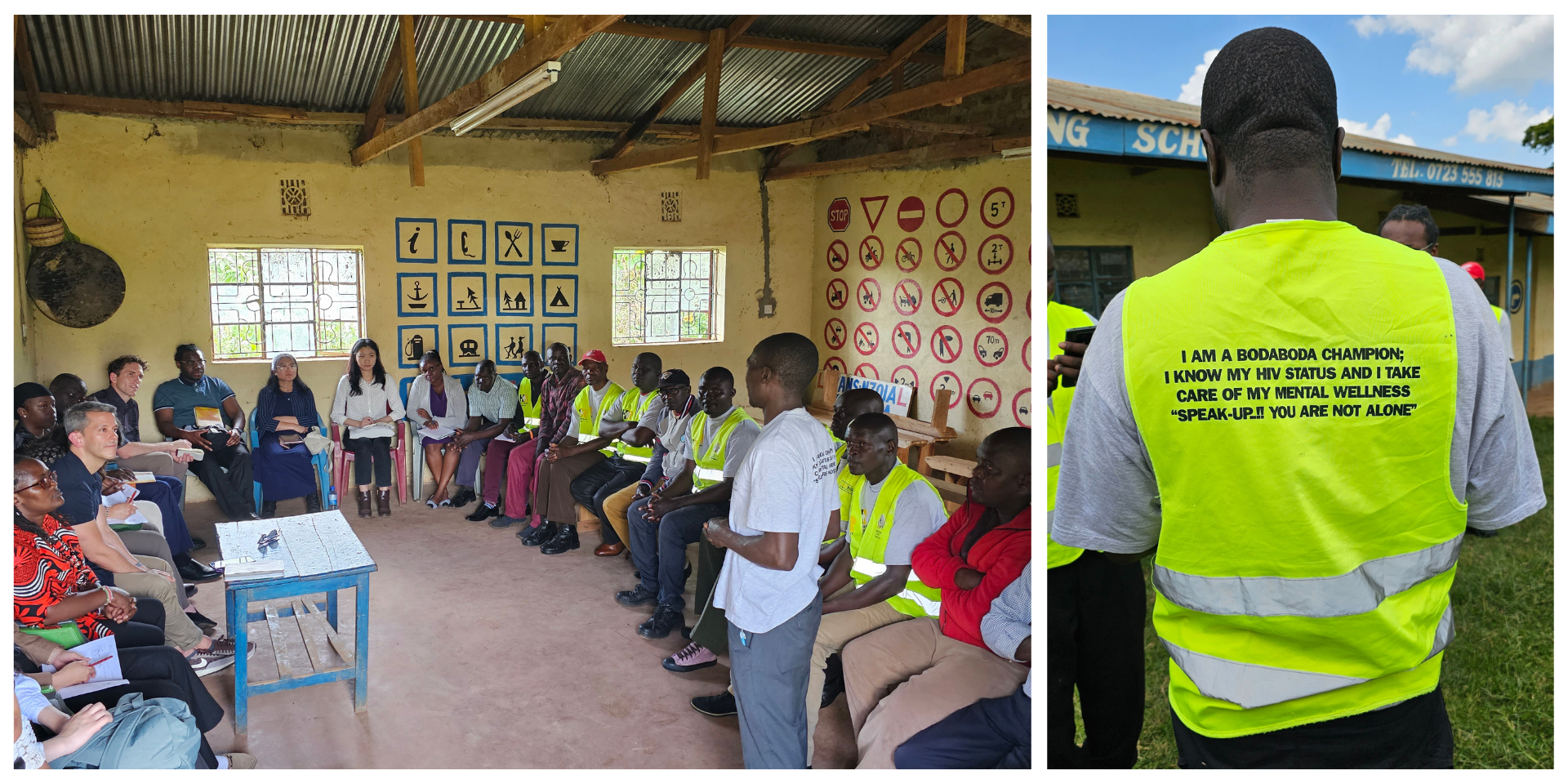
Boda Boda Champions
June 19, 2023
After breakfast, we drove our van to the boda boda driving school to meet with the boda boda champions. Following a couple of brief greetings with the boda boda champions, we shuffled into the meeting room. On the main wall was an array of traffic signs in black, white, yellow, red, and blue: stop sign, no entry, compulsory right/left, caution, and more. In front of the wall were rows of wooden benches where the boda boda riders sat together on the front row. Directly across was a row of individual chairs placed side-by-side where we sat facing the boda boda champions.
Once seated, the boda boda champions went around introducing themselves and the community themselves and the community they represented. Then it was our turn to introduce ourselves with our names, school, and area of study. With the lead boda boda champion acting as the moderator, the boda boda champions then shared with us the work of their program which focuses on spreading awareness of and providing screenings for HIV/AIDs and mental health among boda boda riders, a group dominantly consisting of young men. HIV/AIDs and mental health are target conditions as it is not uncommon for boda boda riders to find sexual partners during their travels and culturally, there is a prevailing stigma among men to seek mental health treatment. The champions also shared their personal inspiration that motivates them to continue their work. One had explained how spreading awareness of health among boda boda drivers allows him to better take care of his own family both in terms of finance and health.
Concluding remarks and a round of applause later, we walked out together, filing into rows for a group picture in front of the building and breaking into one-on-one and smaller group discussions. Not long after, there was interest expressed for us to ride the boda bodas. With one intern to each boda boda, we held on tight to the metal rear carrier of the boda boda as the boda boda rider drove us to our next destination. With our brains full, but stomachs empty, we waved goodbye as we headed to the Westside Hotel for lunch.
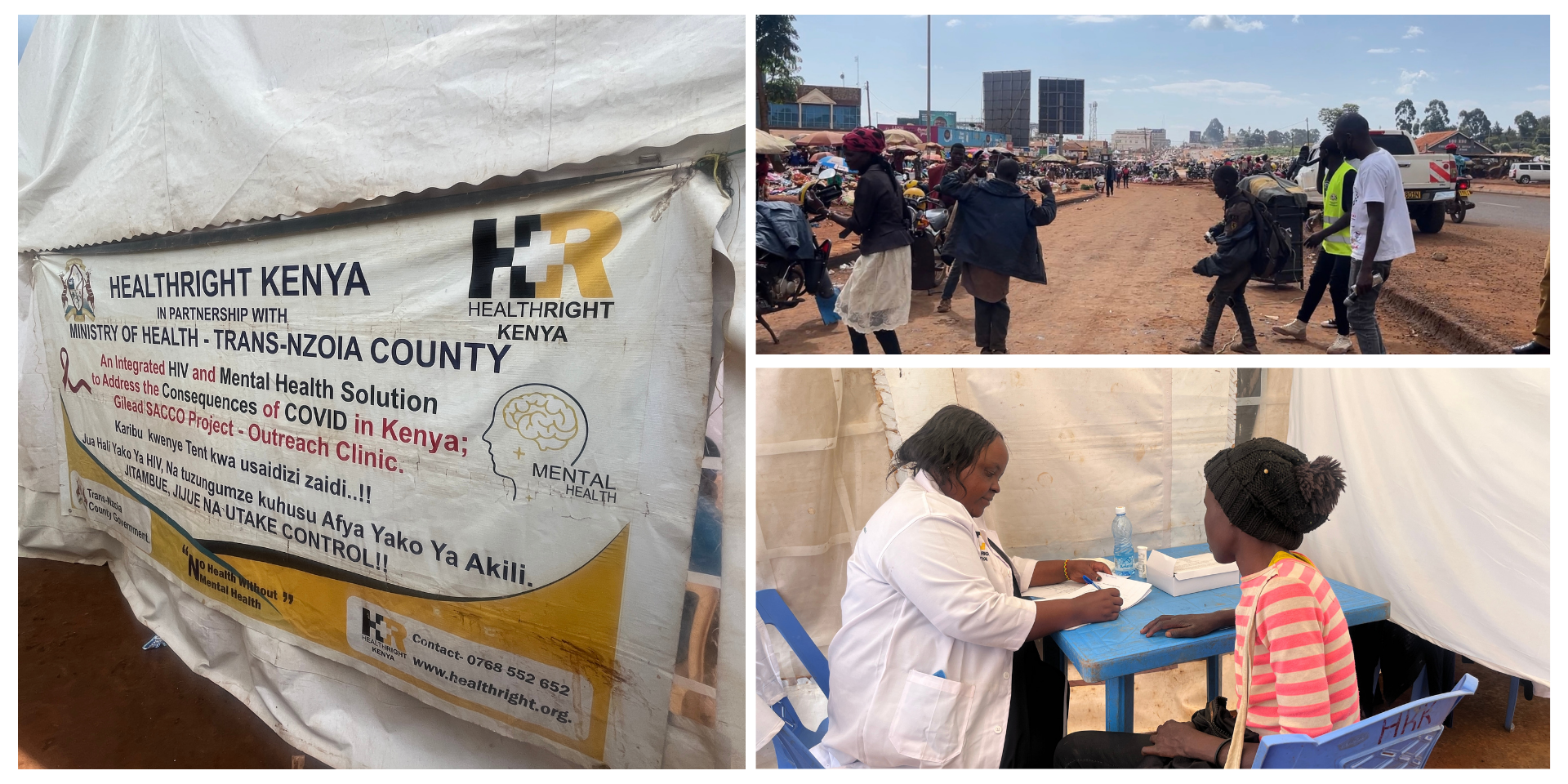
HealthRight Kenya Outreach Site Visit
After lunch, we took the van to visit the HealthRight Kenya outreach site which was situated between a busy road and a large market full of food, crafts, essential items, and people. There, we reconnected with some of the boda boda champions at the outreach site where they further explained to us their outreach work. One of the first things we noticed when we arrived was the upbeat music playing from a large speaker with one of the boda boda champions nearby singing and dancing along. People from the market – both young and old – would join, dancing and singing along to local tunes and songs. After each song, the boda boda champions talked in Swahili, the local language, about the services provided in the large white tent on his left-hand side. On the outside of the tent facing the road is a banner that also introduces the services of screenings for both HIV/AIDs and mental health which are carried out by community health volunteers and a clinical psychologist, respectively. Locals would come into the tent, register, and get screened. Should there be the need for more specialized care from the screenings, the patient would be referred to a local health center or facility. Creatively using music to draw locals in and setting up the tents near high-traffic areas like markets to bring health to the people, this project was really eye opening and inspiring for us to learn about.
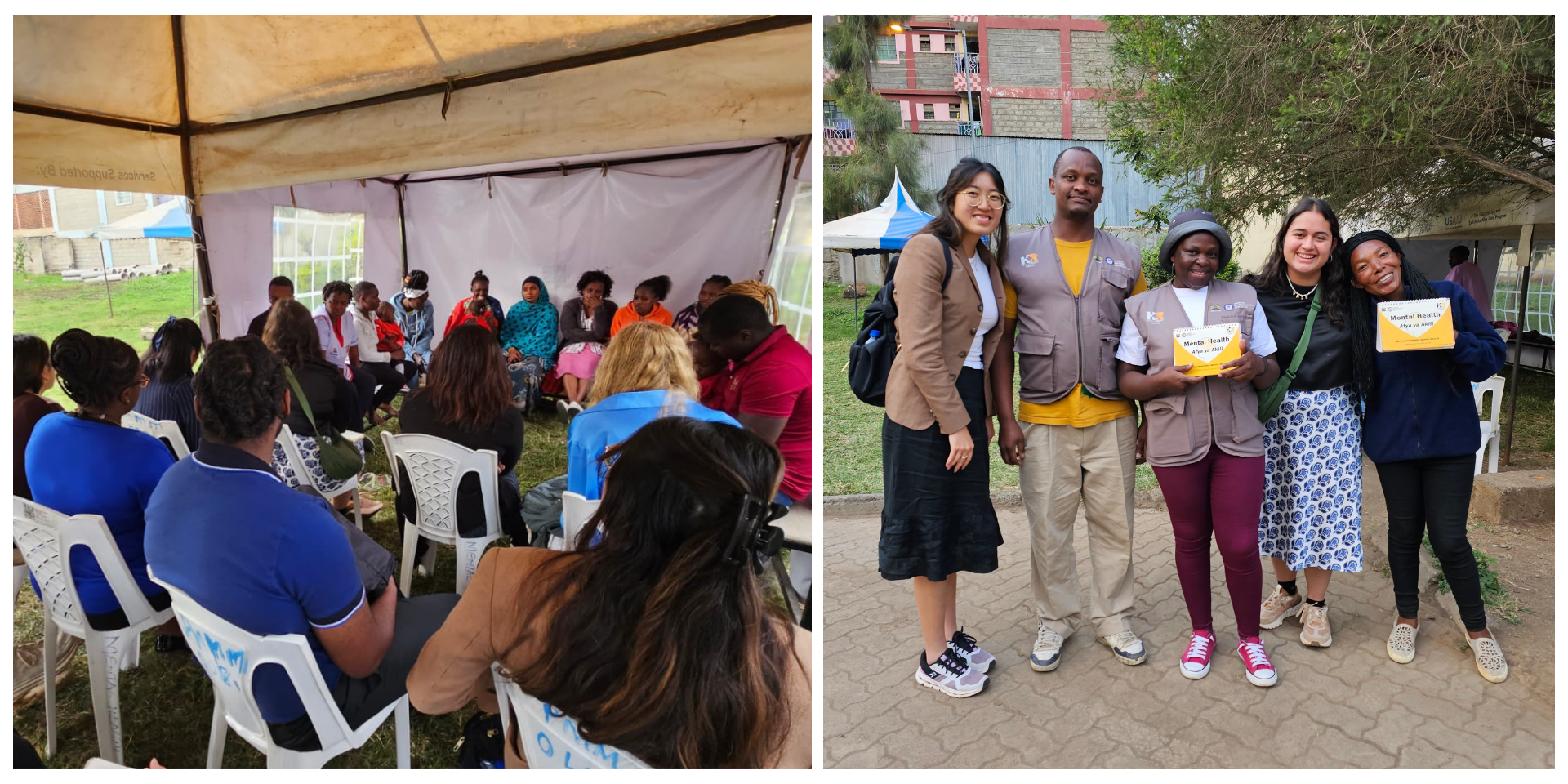
HealthRight Kenya Office and Maternal Mental Health Project
June 22, 2023
We had finally arrived in Nairobi, Kenya’s capital, and a commercial and financial hub in Africa. The city was a stark contrast from our time in Kitale. We were staying at a hotel further from the city, but as we got closer to the city the more modern it became, the more we could see tourists and all types of attractions.
We arrived at the HealthRight Kenya office and were welcomed with open arms by the local staff. At the office we were all able to hear from Dr. Peter Navario about global health financing and non-profit management. It put into perspective the relationship between the Kenya office and the New York office and I believe it gave us a full picture of what HealthRight looks like. The magic of our trip was that we would learn, we would discuss, and then we would see things take place. At the office all staff members introduced themselves and their roles. They talked about the highlights of working at HealthRight and it was clear that they were a community. Their passion for their work stood out and it resonated with us talking about a desire to advocate and work for these marginalized communities.
Our visit to the office was incredibly educational in regards to how HealthRight works, but there is nothing like seeing the work on the ground. We headed to an outreach site for Health Rights’ project: Improving The Mental Health Of Perinatal Women in Nairobi’s Informal Settlement. We were directed to a tent where the different members of the project were gathered. In front of us we had a group of mothers and their children who had been helped by the projects and behind us were the community health workers and volunteers that manage the project. These volunteers improve psychoeducation and they go out into the community to let these individuals know that they are not alone in their fight with mental health.
At the mental health outreach we got to hear from the mothers what their journey was like, where they are now, and how they support one another. The volunteers on the other hand told us about their passion for their jobs and the importance of what they are doing. Pride, emotions, and curiosity was in the air. This project's slogan roughly translates into our health is our responsibility and in these women’s stories you could hear the pride behind taking autonomy of their health and moving forward. Emotions like joy, trust, and confidence surrounded the tent and it brought great conversation between the volunteers and the mothers who were both curious to see what life was like for each person. vieAfter hearing these stories we talked, we laughed, we shared, and we learned about an approach to a culture of wellness that builds on the strengths of a community and its members.
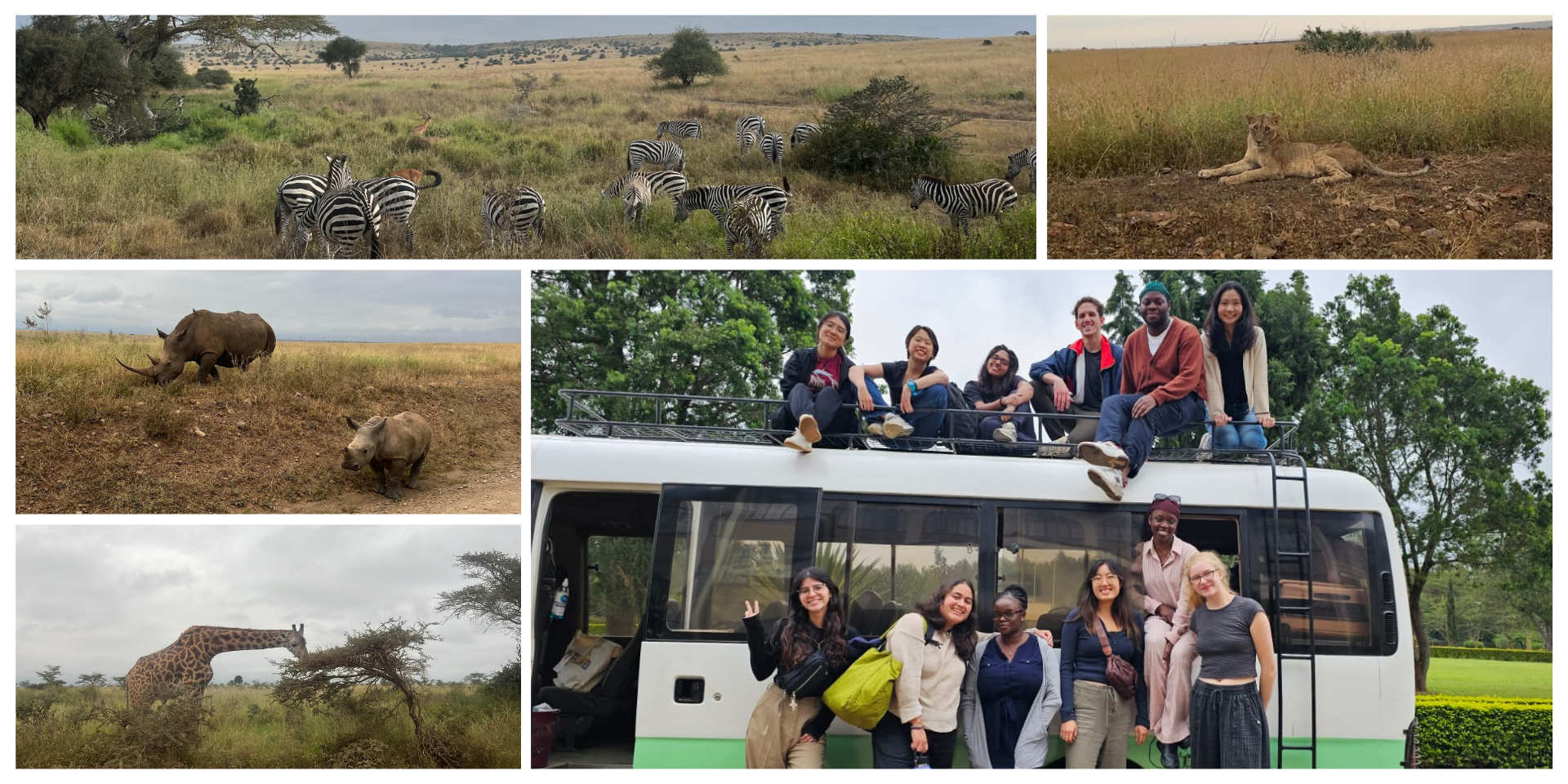
Game Drive in Nairobi National Park
June 23, 2023
Nairobi is famous for its wildlife tourism. Even before we got to Kenya all of us interns were incredibly excited to go on our game drive. At the game drive we drove around in a vehicle viewing the wildlife. In order to guarantee that we would see animals on our game drive we had to leave at around four am. After two weeks of non-stop activities and filling and fun goodbye dinner we were still buzzing to see Nairobi’s beautiful park. We got on the bus that had been our main form of transportation those weeks and headed to the park. There is an aura of tranquility when a city wakes up and as we journeyed into the park you could hear the wheels hit the ground and you could see the sun and the animals beginning to rise.
We were told that we were now in the park and we were on the search for all the animals that lived there. We spotted giraffes in the distance. We were all in awe of the pair of rhinoceros. The rhino moved slowly and calmly whilst we were all jumping with joy and with our heads stuck to the window trying to get the best view. We got deeper into the park and we marveled at the zebras, celebrated the lion, and tried to stay on track with the speed of the antelope. By the end our camera rolls were full, we were full of sand from the roads, and we were sure we would always remember this experience.
Our final activity in Nairobi was the feeding giraffe center. We all washed our hands and learned how to best approach feeding the giraffes. A couple of interns and I fed the giraffe Daisy. All the giraffes had their own names and their own personalities. We listened to the staff tell their stories and tips for getting the best pictures we could. We spent some time with Daisy and it was truly beautiful to see everyone excited to interact with the giraffes. You saw children, families, and schools all ready to connect with the environment. We moved forward to the gift shop where we all added even more souvenirs to our tightly packed bags. After the giraffe center we grabbed our bags, headed to the rooftop with panoramic views of the national park. We wrote cards, thanked and exchanged contact information with those who had accompanied us on our trip as we took a moment of gratitude to wave goodbye to Kenya.